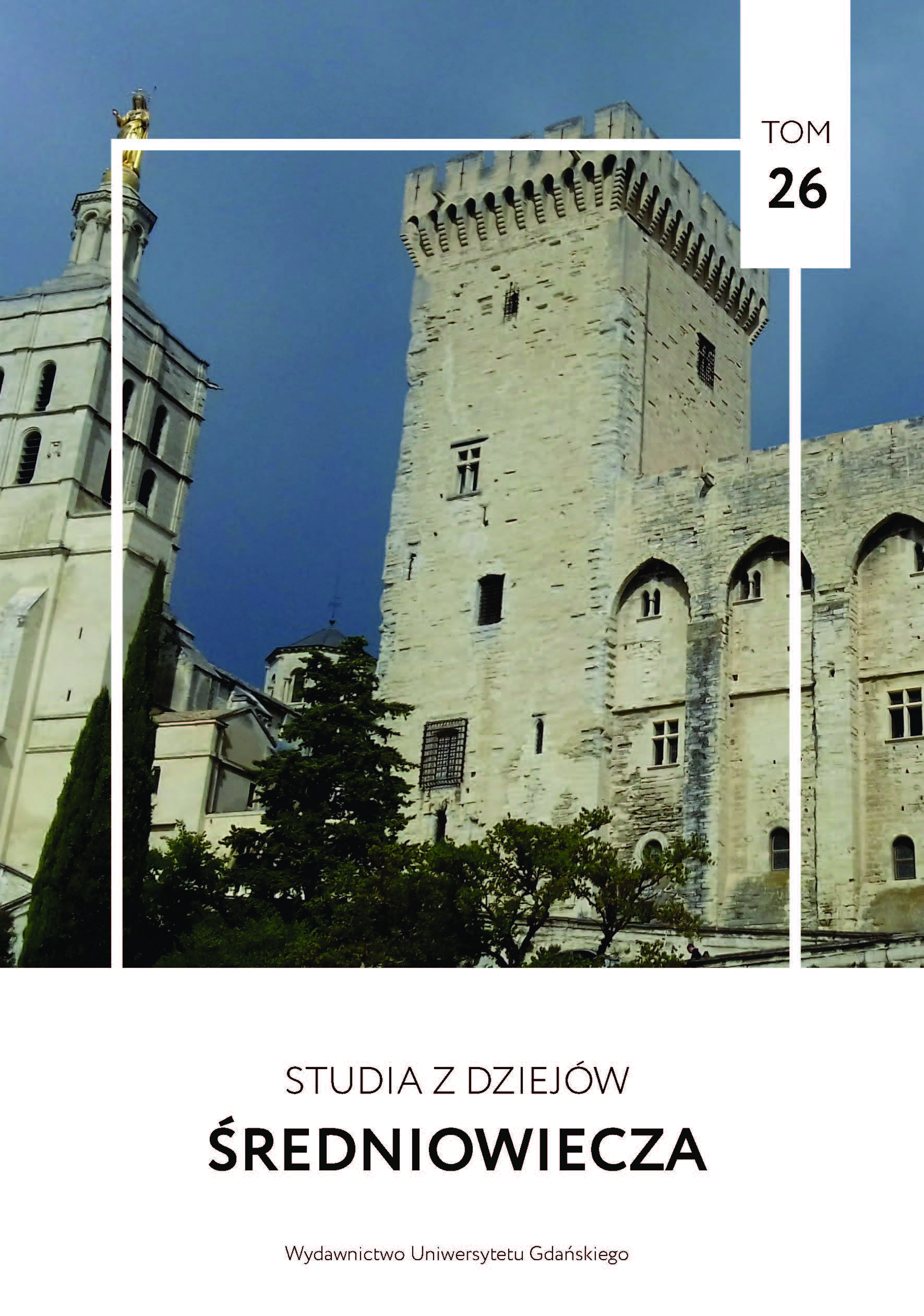Документ і влада на Галицькій Русі пізнього середньовіччя (У зв’язку з монографією Sven Jaros, Integrationen im Grenzraum. Akteure und Felder multikonfessioneller Herrschaftsaushandlung in Kronruthenien (1340–1434), Berlin–Boston 2021
DOI:
https://doi.org/10.26881/sds.2023.26.16Słowa kluczowe:
Rus’, Crown Rus’, nobility, charters, donation policyAbstrakt
The article provides an overview of the recent book written by the German historian Sven Jaros which examines the history of the political process, local elites, and the documentary culture in Halych Rus’ (Red Ruthenia) during the period of the 1340s – 1430s. The book offers a new interpretation of the power relations and the formation of the local elites in the region with a focus on the detailed analysis of the charters issued by the rulers from the Piast, Anjou, and Jagiellon dynasties, as well as by their governors for the local noblemen, townsmen, and commoners. In his analysis Jaros discusses the composition of the groups of the recipients of charters according to their ethnic, social, and geographic origin. The analysis continues with an examination of the mobility of the rulers, governors, and recipients. It seeks to trace the connections between the geographies of the issue of a charter, the property granted, and the residence of the recipients. The book contains short excursions on the beginnings of the Latin Church and the state of the Orthodox Churches in Crown Rus’ under the rule of Casimir III, the Great, as well as on the practices of cura animarum in the region. Jaros concludes that the continuity and changes in the forms of local political communication and the political order, as reflected in the rulers’ charters for Crown Rus’, determined the political and institutional space for the formation of the local nobility as a supra-ethnic and supra-confessional community. The second part of the book consists of a register (repertorium) of all known charters and their deperdita issued for the region’s recipients by the rulers and their governors during the given period. The register is accompanied by observations on the main characteristics of the available corpus of diplomas and charters for the history of Galicia, which highlights the institutional means of their preservation, the correlation between the surviving originals and copies, the mentions of lost documents, etc. The review also offers alternative explanations of some problems raised in the book, such as how some local knightly clans were formed, or the nature of military service and property rights in the lands of Halych Rus’ and its relations to the written documents issued to confirm such rights.
Downloads
Bibliografia
Друковані джерела
Akta grodzkie i ziemskie z archiwum tak zwanego bernardyńskiego we Lwowie, t. 12, 19, wyd. X.
Liske, O. Pietruski, Lwów 1887–1906.
Грамоти XIV ст., вид. М.М. Пещак, Київ 1974.
Українські грамоти, т. 1: XIV в. і перша половина XV в., вид. В. Розов, Київ 1928.
Zbiór dokumentów małopolskich, cz. 4, 6, wyd. S. Kuraś, I. Sułkowska-Kurasiowa, Wrocław 1970–1974.
Тематична література
Janeczek A., Ruś w Koronie: stara nazwa i nowa tożsamość regionalna (po aneksji w połowie XIV wieku) [в:] Pogranicza w polskich badaniach mediewistycznych, red. A. Janeczek, M. Parczewski, M. Dzik, Rzeszów 2019, с. 149–175.
Liske X., Pietruski O., Przedmowa [в:] Akta grodzkie i ziemskie z archiwum tak zwanego bernardyńskiego we Lwowie, t. 12, wyd. iidem, Lwów 1887, с. I–XIV.
Wilamowski M., Powstanie i początki hierarchii urzędów ziemskich województwa ruskiego i Podola, „Roczniki Historyczne” 1998, t. 64, с. 105–128.
Wyrostek L., Rod Dragów – Sasów na Węgrzech і Rusi Halickiej, Kraków 1932–1933.
Смуток І., Руська шляхта Перемишльської землі (XIV–XVIII ст.), Львів 2017.
Зазуляк Ю., Нотатки на маргінесі сучасних російських досліджень з історії Галичини. Дещо про грамоти князя Лева, перемиську шляхту та її генеалогію, «Український Гуманітарний Огляд» 2004, т. 10, с. 9–62.

 Uniwersyteckie Czasopisma Naukowe
Uniwersyteckie Czasopisma Naukowe





